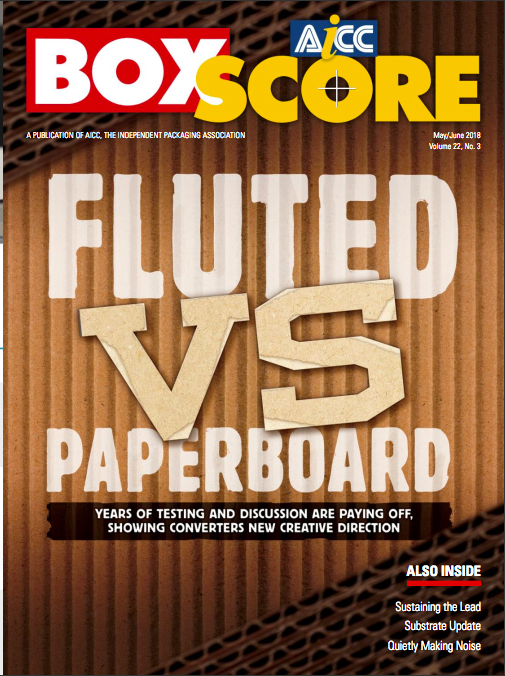By R. Andrew Hurley, PhD
PackagingSchool.com for AICC’s BoxScore
Published June 1, 2018
I recently attended a local FedEx summit on e-commerce packaging and was surprised by the attendance—lots of entrepreneurs and small to medium businesses. I learned a lot about the software that helps to distribute inventory across all of your digital marketplaces, systems that allow businesses to communicate the location and status of parcels in transit, and ways to rethink unboxing experiences.
But the hottest topic of the day was returns. Simply put, e-commerce transactions can go very badly when a large box containing five-plus products is shipped to a customer’s doorstep, and then one product is returned in the large box. Did you know that one return can create a significant deficit, and sometimes the return shipping costs the company more than the revenue received for the original order?
E-commerce giants such as Amazon and Walmart have negotiated fantastic deals with their carriers to ensure that returns have minimal impact. But for small and medium-sized e-commerce businesses, returns can be catastrophic.
So, as an educator and researcher, I wanted to learn the “what,” “how,” and “why” of this situation. The video crew at PackagingSchool.com interviewed numerous business owners at the event, and one interview with Frank, an independent e-commerce business owner, really put things into perspective for me.
Frank sells one of those amazingly popular tech toys that is all over the internet. But even though it’s in an incredibly competitive market, Frank’s company is doing really well. Sales are increasing, and his social media groups have 80,000 members and are growing. I asked Frank how he does it, and a simple two-word explanation hit home: customer service.
Frank takes a different approach to transactions—he charges, tests, and confirms each product before delivery. He set up an email campaign to ensure that customers understand what they’ll be receiving and to provide instructions for use while the product is in transit. Frank said that he’ll spend an hour with a customer answering their questions, and he noted that most problems result from a lack of education. The purchase intent was fine, but customer expectations were not translating into features.
I asked Frank about returns, and he smiled and said it wasn’t a problem for him. He set up his website and e-commerce store to help buyers understand products at a human level, where products are organized and described by professional and recreational needs curated to the user. As a curated marketplace, Frank’s company is able to progressively disclose details and information as he sees best to his customers. This, along with great attention to customers upfront, means they are much more likely to choose what is most appropriate for them to begin with, reducing buyer’s remorse and the need to return.
Frank sees a bright future for small and medium-sized e-commerce businesses. If you’re challenged by the financial hurdle returns are causing, follow Frank’s lead and rethink your customer interface. Personalized service and curated marketplaces go a long way in creating customer loyalty for smaller vendors and may just result in reducing returns and unmet expectations.
Andrew Hurley, Ph.D., is an associate professor of packaging science at Clemson University. He can be reached at me@drandrewhurley.com.
Original Article:
http://www.aiccboxscore.org/2018/06/marketplace-competitiveness/






